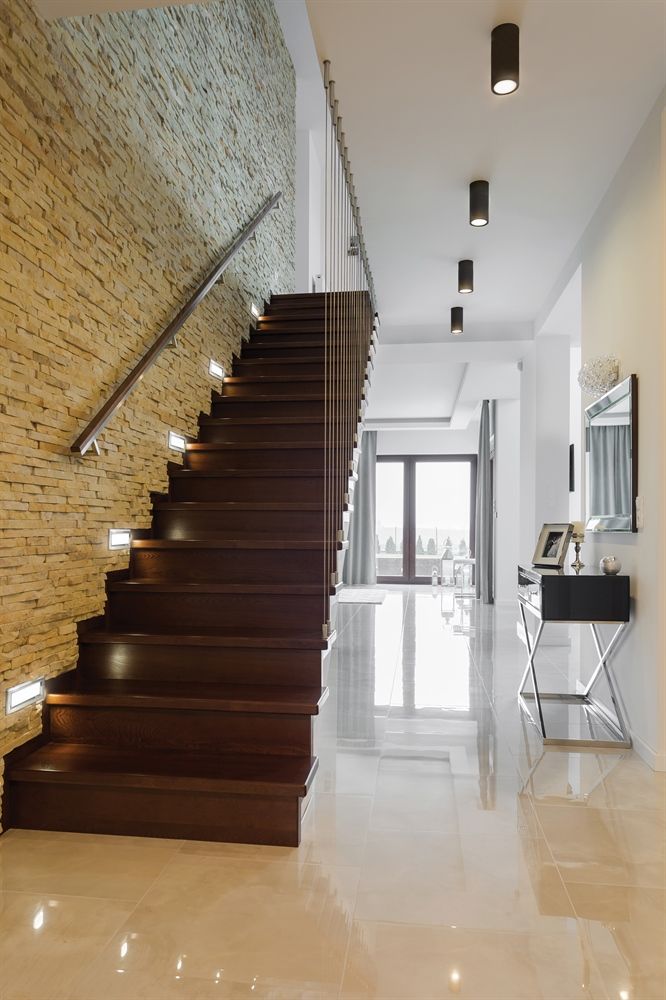Today, LED bulbs are the most efficient, longest lasting, and often the most suitable choice for residential lighting. However, the slightly higher upfront cost, along with the variations in light output and color temperature, can make the switch to LEDs feel somewhat daunting.
The best place to start for the highest-quality LED bulbs is an ALA-member lighting showroom. The experts there are well versed in all aspects of lighting and can help ensure the bulbs you choose are compatible with specific fixtures and controls already installed in your home. With that said, having a grasp on the basics can help make your visit to a showroom more productive and successful. Here are a few things to consider when purchasing LEDs.
1. Jargon
It used to be that simply looking at the watts on a bulb package was sufficient. With LEDs, there are few additional things you want to consider.
Lumens: This will tell you how bright the bulb is. You may be surprised to know that the old measurement of watts actually told you little about how bright the bulb would be. Watts only measure the amount of power a bulb draws, and bulbs with the same wattage may put out very different amounts of light. Lumens tell you how much light a bulb emits; the higher the number, the brighter the light.
Color: LEDs range in color, which is measured in Kelvins. Look at the package to see if the bulb will produce a warm tone, say around 2700K, or a cooler, more blue-toned light, around 4000K.
CRI: This is a measurement of how the bulb renders colors. 80+ is good, while 90+ is great.
Dimming: If you have dimmers already set up or are looking to install them in your home, you’ll want to know if the bulb is dimmable and which dimmers are compatible.
2. Price
As we mentioned earlier, the cost of LEDs is slightly higher than what we are used to paying for a light bulb. However, the upfront cost is balanced by long-term savings.
First, LEDs last much longer than traditional light bulbs, with some lasting up to 20 years. The rated life of an LED bulbs is based upon hours burned, and a typical life rating for household LEDs is 10,000 hours or more. LED bulbs are not likely to fail by simply burning out either. It is more likely they will gradually get dimmer over time.
LED bulbs are also more efficient than traditional bulbs, which can add up to energy savings over time. Efficiency, or efficacy, is the light output of the bulb (lumens) divided by its power input (watts), i.e. lumens per watt. The standard household bulb of a few years ago rated for 60 watts generated 800 lumens and had an efficacy of about 13 lumens/watt. Today, an LED bulb rated for 800 lumens would draw about 8 watts, for an efficacy of 100 lumens/watt, making it significantly more efficient.
3. Compatibility
By now, you are likely aware that LEDs can be used in a variety of different applications. However, it is important to ensure you’re using the correct bulb. There are LED bulbs that feature a special base, which allows them to be installed in a standard three-way socket that switches output from low, to medium, to high. Additionally, LEDs aren’t only for indoor use. LED bulbs are rated and marked for three types of conditions: dry, damp and wet. Bulbs rated for wet conditions can be used in sockets exposed to rain and snow. If the bulb or carton is not marked, assume the bulb can only be used in dry situations. Finally, in general, LED bulbs operate well at low temperatures. Therefore, in certain applications, it’s also important to check the bulb ratings to see the temperature range for which the bulb was designed. For tightly enclosed fixtures, there are LED bulbs specifically rated to better manage heat build-up that could affect bulb performance.
So, while switching to LEDs may seem complicated at first, when compared to the simplicity of choosing an incandescent light bulb, their versatility and other benefits make them the ideal choice for many residential lighting applications. To learn more about LEDs, check out our lighting FAQs page on bulbs and LEDs. If you have additional questions, ask an expert at your nearest ALA-member showroom.
Photo accompanying post by Nora Lighting.

